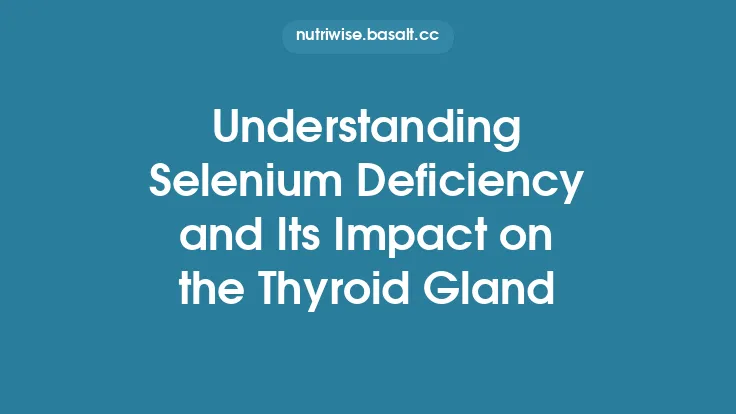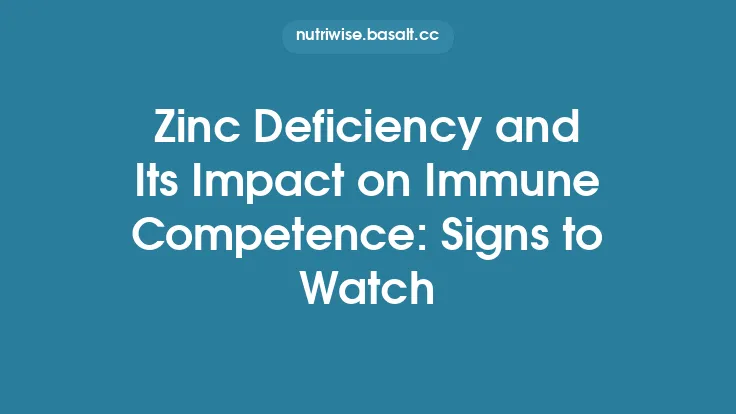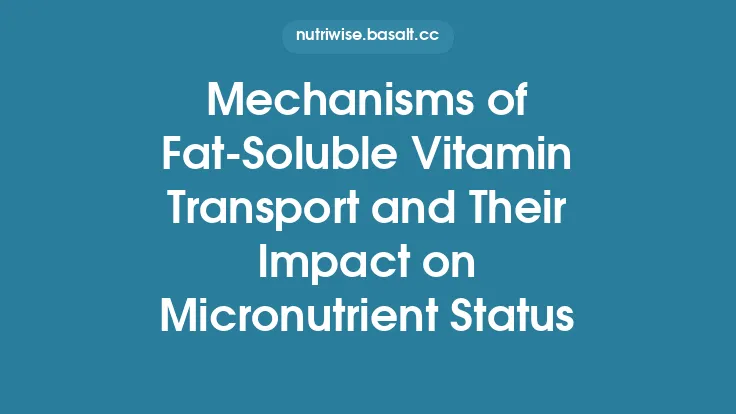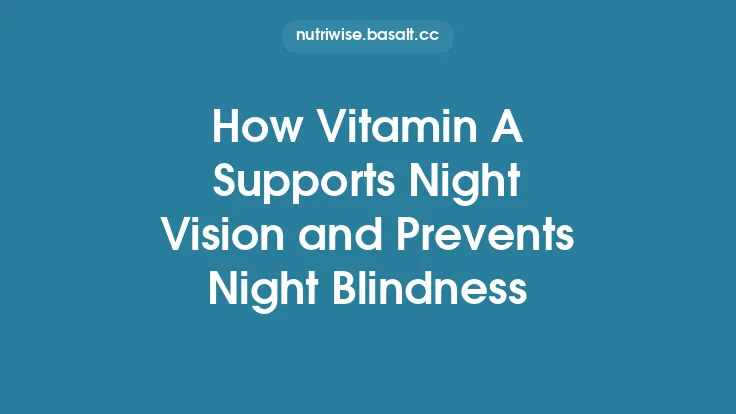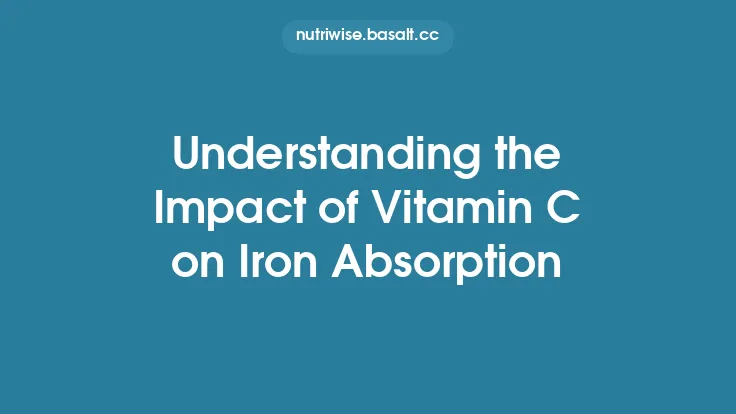Vitamin A deficiency remains one of the most pervasive micronutrient disorders worldwide, and its repercussions on ocular health are both profound and preventable. While the nutrient is celebrated for its essential functions in the visual cycle, the consequences of insufficient intake or impaired metabolism manifest most dramatically in the eye. Understanding the cascade—from systemic shortage to the specific structural and functional changes in ocular tissues—provides a foundation for clinicians, public‑health professionals, and policymakers to intervene effectively.
Epidemiology and Global Burden
The World Health Organization estimates that over 250 million preschool‑age children and 800 million pregnant women are at risk of vitamin A deficiency (VAD). The condition is most prevalent in low‑ and middle‑income regions where diets are heavily reliant on staple cereals and tubers that lack preformed retinol or provitamin A carotenoids.
- Geographic hotspots: Sub‑Saharan Africa, South‑East Asia, and parts of the Amazon basin report the highest prevalence rates, often exceeding 20 % of the at‑risk population.
- Seasonal variation: Harvest cycles and food‑storage practices can cause seasonal spikes in deficiency, particularly during lean periods when fresh produce is scarce.
- Mortality and morbidity: VAD is a leading cause of preventable childhood blindness, contributing to an estimated 5–7 % of global blindness cases. The condition also increases susceptibility to severe infections, compounding overall child mortality.
These statistics underscore that VAD is not merely a nutritional concern but a public‑health emergency with direct implications for visual health.
Physiological Role of Vitamin A in Ocular Tissues
Even though the focus here is on deficiency, a brief overview of the normal functions of vitamin A in the eye clarifies why its absence is so damaging.
- Epithelial maintenance: Retinoic acid, the active metabolite of vitamin A, regulates gene expression in conjunctival and corneal epithelial cells, promoting differentiation and barrier integrity.
- Mucous production: Goblet cells in the conjunctiva depend on retinoic acid signaling to synthesize mucins, which are essential for a stable tear film.
- Photoreceptor health: In the retina, 11‑cis‑retinal combines with opsin proteins to form rhodopsin, the photopigment required for photon capture.
When systemic stores fall below critical thresholds, these tightly regulated processes deteriorate, setting the stage for the clinical manifestations described below.
Pathophysiological Mechanisms of Deficiency
The ocular sequelae of VAD arise from a combination of cellular, biochemical, and structural disruptions:
- Impaired epithelial differentiation
- Retinoic acid binds nuclear retinoic‑acid receptors (RARs) and retinoid‑X receptors (RXRs), driving transcription of genes involved in keratinization. Deficiency leads to squamous metaplasia of the conjunctival epithelium, reducing its protective function.
- Goblet‑cell loss and mucin deficiency
- Without adequate retinoic acid, goblet‑cell density declines, resulting in a tear film that is less lubricating and more prone to evaporation. The ensuing dry‑eye environment accelerates corneal epithelial breakdown.
- Altered extracellular matrix remodeling
- Vitamin A modulates matrix metalloproteinases (MMPs) and tissue inhibitors of metalloproteinases (TIMPs). Deficiency skews this balance toward matrix degradation, weakening stromal support and predisposing the cornea to ulceration.
- Reduced antioxidant capacity
- Retinol and its derivatives act as scavengers of reactive oxygen species (ROS). In the avascular cornea, a deficit heightens oxidative stress, further compromising epithelial integrity.
These mechanisms converge to produce the characteristic ocular pathology of VAD, collectively termed xerophthalmia.
Clinical Spectrum of Ocular Manifestations
The World Health Organization classifies VAD‑related eye disease into a graded series, reflecting progressive severity:
| Stage | Clinical Features | Pathophysiology |
|---|---|---|
| X0A | Night blindness (often omitted in this article to avoid overlap with dedicated night‑vision content) | Early photopigment depletion |
| X1A | Conjunctival xerosis – dryness and loss of luster | Epithelial keratinization |
| X1B | Bitot’s spots – foamy, triangular lesions on the temporal conjunctiva | Accumulation of keratin debris and lipid‑rich material |
| X2 | Corneal xerosis – hazy, dry cornea | Severe epithelial breakdown |
| X3A | Corneal ulceration/keratomalacia (partial) | Stromal necrosis due to infection or trauma on a compromised surface |
| X3B | Total corneal blindness (complete keratomalacia) | Full‑thickness corneal melt, scarring, and opacification |
Bitot’s spots are pathognomonic for VAD and result from the accumulation of keratinized epithelial cells and lipid‑rich secretions. Their presence often prompts clinicians to investigate systemic vitamin A status.
Keratomalacia, the most severe manifestation, can develop rapidly—within weeks—once the cornea is exposed to environmental insults (e.g., dust, smoke) on a deficient background. The condition is a medical emergency, frequently leading to irreversible blindness if not promptly treated.
Risk Factors and Populations at High Risk
While VAD can affect anyone with inadequate intake, certain groups are disproportionately vulnerable:
- Infants and young children: Rapid growth demands high micronutrient turnover; exclusive breastfeeding without maternal supplementation can be insufficient if maternal stores are low.
- Pregnant and lactating women: Increased maternal plasma volume and fetal demands deplete maternal reserves, potentially compromising both mother and infant.
- Individuals with malabsorption syndromes: Celiac disease, cystic fibrosis, and chronic pancreatitis impair the absorption of fat‑soluble vitamins, including retinol.
- People with chronic infections: Repeated diarrheal episodes or measles can deplete vitamin A stores and impair hepatic mobilization.
- Low‑income households with limited dietary diversity: Reliance on refined grains and limited access to animal‑source foods or provitamin A carotenoid‑rich produce heightens risk.
Understanding these risk profiles enables targeted screening and intervention.
Diagnostic Approaches
Accurate identification of VAD is essential for timely treatment. Diagnostic methods fall into two categories: clinical assessment and laboratory measurement.
- Clinical assessment
- Conjunctival impression cytology: Samples of conjunctival epithelium are stained and examined for squamous metaplasia and goblet‑cell loss.
- Slit‑lamp examination: Detects xerosis, Bitot’s spots, and corneal changes.
- WHO grading: Provides a standardized framework for field surveys and epidemiological studies.
- Laboratory measurement
- Serum retinol concentration: Measured by high‑performance liquid chromatography (HPLC). Levels < 0.70 µmol/L (≤ 20 µg/dL) indicate deficiency.
- Retinol‑binding protein (RBP): A surrogate marker, especially useful in resource‑limited settings, though it can be confounded by protein‑energy malnutrition and inflammation.
- Dried blood spot (DBS) analysis: Offers a field‑friendly alternative, allowing transport and storage at ambient temperature.
Interpretation must consider acute‑phase responses; inflammation can transiently lower serum retinol independent of true body stores. Adjustments using C‑reactive protein (CRP) or α‑1‑acid glycoprotein (AGP) levels improve diagnostic accuracy.
Management and Therapeutic Interventions
When VAD is confirmed, the therapeutic goal is rapid replenishment of hepatic stores while preventing ocular complications.
- High‑dose oral vitamin A
- Children (6 months–5 years): 200,000 IU (≈ 60 mg retinol) on day 1, repeated on day 2, and a third dose on day 14.
- Pregnant/lactating women: 200,000 IU on day 1 and a second dose on day 2.
- Adults: 200,000 IU on day 1 and day 2, followed by a maintenance dose of 25,000 IU weekly for 4–6 weeks.
The regimen is designed to saturate hepatic retinol‑binding protein pathways, allowing for rapid mobilization to ocular tissues.
- Topical supportive care
- Lubricating eye drops (preservative‑free artificial tears) to mitigate surface dryness.
- Antibiotic prophylaxis when corneal ulceration is present, to prevent secondary bacterial infection.
- Nutritional counseling
- Emphasize inclusion of provitamin A carotenoid‑rich foods (e.g., orange-fleshed sweet potatoes, carrots, dark leafy greens) and animal‑source retinol (e.g., liver, egg yolk) where culturally acceptable and affordable.
- Monitoring
- Re‑examination of ocular signs 2–4 weeks after treatment. Persistent xerosis or Bitot’s spots may indicate inadequate absorption or ongoing deficiency, prompting further investigation.
Public Health Strategies and Prevention Programs
Because VAD is largely a disease of poverty and food insecurity, population‑level interventions are critical.
- Mass vitamin A supplementation (VAS)
- Biannual distribution of high‑dose capsules to children aged 6–59 months has been shown to reduce all‑cause mortality by up to 24 % in high‑risk settings.
- Integration with routine immunization visits (e.g., measles, polio) improves coverage.
- Food‑based approaches
- Biofortification: Development of staple crops (e.g., provitamin A‑rich maize, golden rice) that deliver higher carotenoid levels.
- Home gardening: Promotion of small‑scale vegetable production to increase household access to carotenoid‑dense produce.
- Fortification of staple foods
- Adding retinyl palmitate to cooking oil, sugar, or flour has been successful in several countries, delivering a steady, low‑dose supply of vitamin A across the population.
- Education and behavior change communication
- Community health workers disseminate key messages about the importance of diversified diets, proper infant feeding practices, and the signs of ocular deficiency.
- Surveillance and evaluation
- Periodic national surveys using WHO grading and serum retinol measurements track progress, identify gaps, and guide resource allocation.
Challenges and Future Directions
Despite decades of effort, several obstacles hinder the complete eradication of VAD‑related vision loss:
- Logistical barriers: Reaching remote or conflict‑affected populations with VAS remains difficult.
- Cultural acceptability: Some communities resist fortified foods or biofortified crops due to taste preferences or misconceptions.
- Interaction with other micronutrient deficiencies: Concurrent zinc deficiency impairs vitamin A metabolism, necessitating integrated supplementation strategies.
- Climate change: Shifts in agricultural productivity may affect the availability of provitamin A‑rich foods, increasing reliance on supplementation.
Research priorities include:
- Improved biomarkers: Development of point‑of‑care tests that differentiate true deficiency from inflammation‑induced hypo‑retinemia.
- Genetic studies: Exploration of polymorphisms in retinol‑binding protein and enzymes involved in carotenoid conversion to better tailor interventions.
- Sustainable delivery models: Leveraging mobile health platforms and community‑based distribution networks to maintain high coverage rates.
By comprehensively understanding the cascade from systemic vitamin A shortage to the specific ocular pathology it engenders, stakeholders can design more precise, culturally sensitive, and sustainable solutions. Addressing vitamin A deficiency is not only a matter of preventing blindness; it is a cornerstone of broader child health, survival, and development initiatives.
